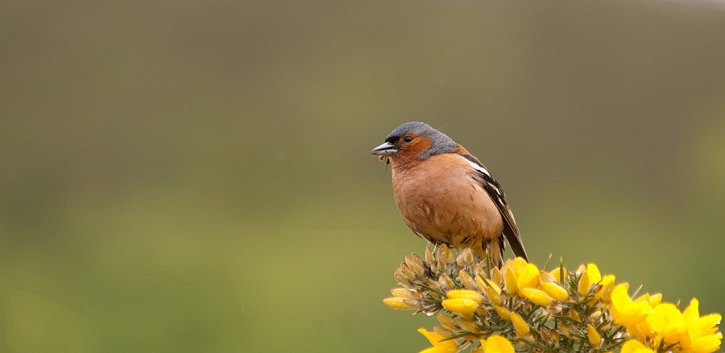UCC research: 10% reduction in birds near wind turbines

New UCC research has shown that there is a decrease in Irish bird populations in areas immediately adjacent to wind turbines.
As wind farms become more widespread in upland habitats, this may affect how birds use these areas. Dr Darío Fernández-Bellon of the School of Biological, Earth and Environmental Sciences and the Environmental Research Institute in UCC led the study, recently published in Conservation Biology.
Bird populations drop in areas near wind turbines, research led by @UCC has suggested https://t.co/XFByDetmY3
— The Times IE (@thetimesIE) October 25, 2018
"Our research shows that birds are less abundant around turbines and the main reason seems to be the clearing of habitats during wind farm construction. Forest species like chaffinches, great tits or goldcrests are the most affected as commercial plantation forests are cleared to make way for turbines and wind farm tracks," said Dr Fernández-Bellon.
"Most people are familiar with the problem of bird collisions with wind turbine blades, but this study highlights how indirect effects, such as the alteration of habitats, can also be important.”
New study from @dferbel in @uccBEES showing that Irish bird populations are being negatively impacted by wind farms https://t.co/NxQJLjXYMr @johbees @CullotyS @PaulTBolger @JerryDMurphy66 @BOGallachoir @MaREIcentre @EPAIreland @BirdsMatter_ie @UCCResearch @rte @KOSullivanIT
— ERI (@eriucc) October 24, 2018
Over the last few decades, alternative energies have become increasingly common as we strive to reduce pollution and carbon emissions generated by fossil fuels. For example, wind farms are expected to provide 20% of the world’s energy requirements by 2050. However, this does not mean that renewable energy production does not impact on the environment, and, therefore, careful management of the rapid growth of this sector is essential to ensure that developments are undertaken in a sustainable manner.
Dr Fernández-Bellon and colleagues surveyed birds at 12 upland wind farms in Ireland and found a 10% reduction in bird numbers in areas close to turbines. “Our study shows that wind farms have different effects on different bird species depending on the habitats they use and how these habitats are affected by wind farm development."
“Although all of the birds considered in this study were relatively common and widespread, impacts on these species should not be dismissed. Ongoing changes in climate, habitat, land use and other factors are impacting bird populations, so that species that are common today may become rare in the future. In addition, many common species play important roles in our ecosystems as they feed on invertebrate pests or because they are prey for predators, such as hen harriers that are of conservation importance.”
Speaking about the implications of the study, leading UCC zoologist and co-author Professor John O’Halloran called for increased consideration of indirect impacts on wildlife in the planning and building of wind turbines. “To ensure that renewable energy development is truly sustainable, we must consider not only the effects of collisions with turbines but also the other ways in which wind farm development may influence communities of bird species.”
For more on this story contact:
Dr Darío Fernández-Bellon, 087 7542973 or dfernandezbellon@ucc.ie.
